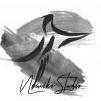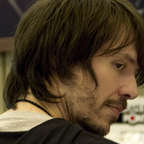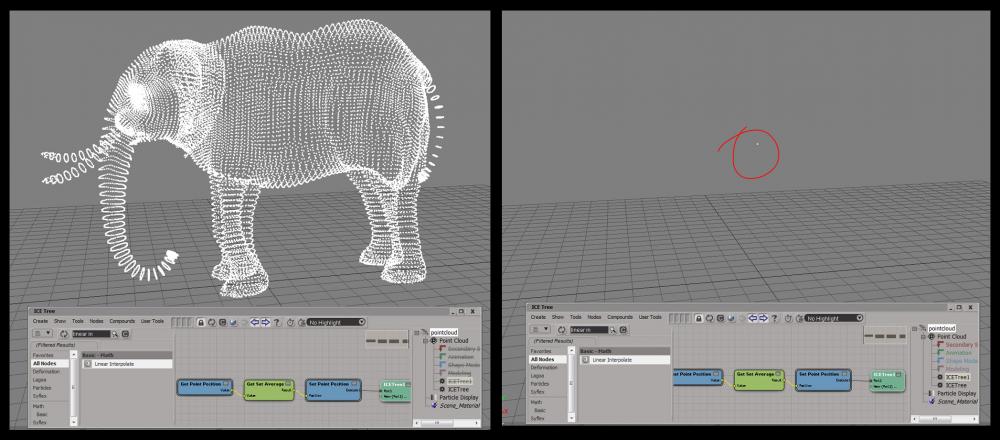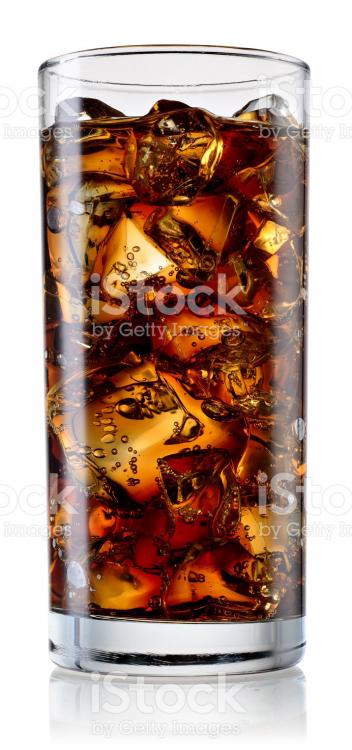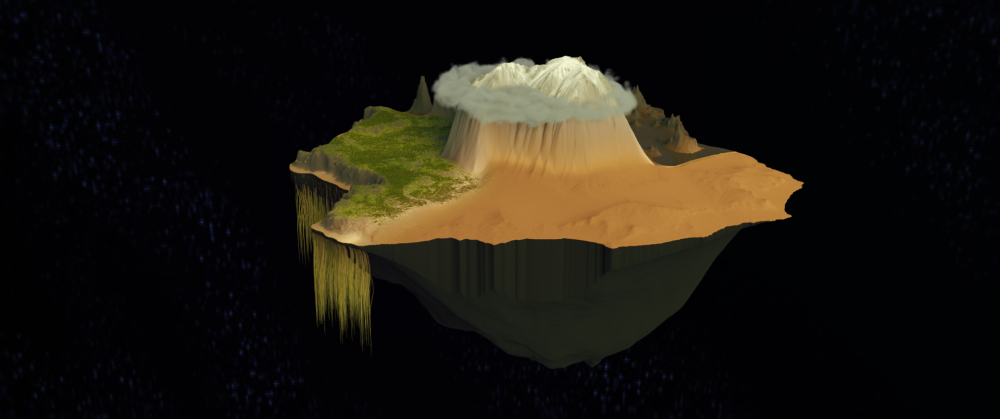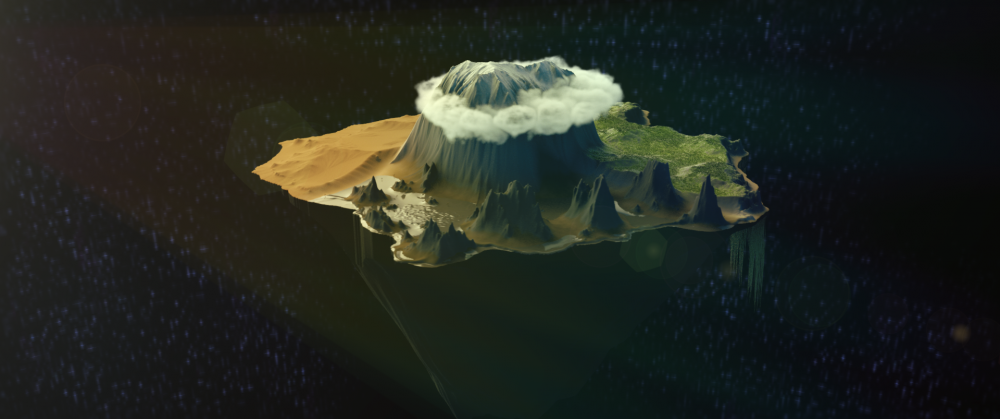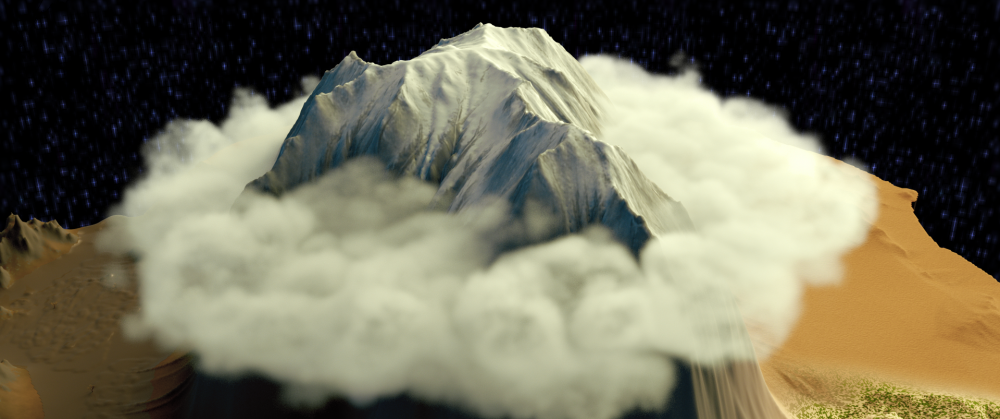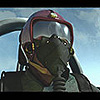Search the Community
Showing results for tags 'ICE'.
-
EDIT* Solved... sort of... it seems that you can't do it in one sim. First do an rbd with forces pushing up below the "waterline" and down above it to simulate gravity. The do a low res flip using the rbds as coliders. Then advect a new rbd sim with those velocities. Then do a high res flip. So lots of back and forth... Hello! How do you achieve this sort of thing? https://vimeo.com/153607646 or https://vimeo.com/312753480 I can get fractured rbds to float on water but i can't get them to work when I try do do it with constrains and colliders like the above examples. I have a scene with fractured geo (using material fracture sop) and a dopnet with geo as a "fractured object" (not packed) . This is held in place with glue and pin constraints. I have the flip (flat tank) solver feedback set to 1 (I've tried all different values, 0.1-10) and the merge set to mutual. everything is using volume collisions. I have the fractured geo plugged in to the "merge collisions" in the in the fliptank initial wavetank but i've also tried changing the waterline so there is no intial contact between the rbds and flip. It explodes. The fractured object pieces fly off or sink and the flip is out of control (overreacting to the rbd pieces). Thanks in advance!
-
Hi all, So I'm still new to Houdini and I have this project I'm working on to melt ice. I want it to look realistic and so I've decided to make it melt layer by layer (outwards in). I've scattered points on the object itself that act as melting points on the object however the result is not realistic and it doesn't melt the entire surface rather it goes through the object. I've attached an image showing a test with a sphere as the object to be melted, the white bits are the seeds that spread and activate the melting process(they spread through the object in a sphere manner rather than just spreading on the surface first then working their way inwards). So my question is, is there any way to group the outer layer of points of an object and make it keep updating so as the object transforms the outer layer will keep regrouping? OR is there any way to make the outside scattered points grow towards the center of the object (e.g. if I were to create a point in the center that attracts all the points surrounding it towards it)? Any feedback would be much appreciated Also apologies if I don't make any sense.
-
Smoke rbd houdini + hip file In this asset, the dynamics of the interaction of solid objects with volimetry as well as the dynamics of the destruction of the object are added. https://artstn.co/m/JnJq hip file Cloud and fire houdini + hip file This project presents the procedural modeling of stones, creating a lightning strike, working with sand, clouds, and fire. The final animation can be viewed at the link below or in my portfolio. https://artstn.co/m/Bq6a hip file Lava smoke houdini + hip file This asset presents the dimanics of hot lava smoke, the dynamics of the lava itself, and the shaders of smoke and lava The final animation render can be viewed at the link below or in my portfolio https://artstn.co/m/pJaG hip file Ice smoke houdini + hip file In this asset, not only work on creating cold smoke is presented, but also work with sand and its dynamics, particle emitter, procedural modeling of crystals and stones, as well as a full render of a scene with shaders. The animation that happened in this can be seen on the link below. https://artstn.co/m/d0Ak hip file
-
Hi everyone, I'm trying to do an effect where the default pig head model is raised from the bottom and to look like ice growing and then have a big cube fall and destroy it. I have created two files the first (Ice2) is based on Yongji Chen's lvl 80 article on ice growth. The other is a destruction test following Alessandro Nardini's amazing master class tutorial. I was going to try and see how I could combine them and work the two together and I have had some success but still no luck in combining. In the destruction file, my pig head geometry looks very rocky instead of regular and smooth. I was wondering if anyone had any tips or ways I might be able to accomplish this. I have included both my hip files if anyone wants to take a look. Thank you for your time! destruction_MC_P.hipnc Ice2.hipnc
-
Hey everyone, My procedural ice tool is now on Gumroad! https://gum.co/icetool Enjoy!
-
Ice fracture on a trampoline, what workflow would you use?
ForeverMovement posted a topic in Effects
Hello all, I want to replicate the effect of ice breaking on a trampoline but I can't seem to get my head around the workflow for how I would go about it, the reference is here: https://www.youtube.com/watch?v=UxpM2D2i0o4 The trampoline part is easy enough, with a quick Vellum setup I got a decent result. The problem comes with the ice, as I figured, I don't know if it's best to take it through Vellum or an RBD setup. I need it to do a few things based on the reference, obviously the first shatter effect and then smaller breaks afterwords from repeated impacts. I don't believe Vellum can have a setup that consistently breaks down over time over the multiple impacts(unless it's just a very high res grain sim?). The Vellum approach is nice because of the speed of the result and the ease of use. On the other hand RBD is robust and I know there's information out there on breaking pieces into smaller and smaller chunks, but when I attempted to sim using a glass style fracture it would explode with the cached Vellum geometry under it. Any ideas or other threads somebody can point me towards to get my bearings with something like this? To create the ice sheet I would just take a stable frame from the beginning of the sim and fracture ontop of that cleaned piece of geo. Attached is the base file with just the trampoline sim, as my attempts with both the vellum setup and RBD was very cluttered and made the scene file harder to look through. I don't know why I always manage to bury myself in these weird effects but ¯\_(ツ)_/¯ I can't help myself. As always y'all are lifesavers and I can never thank you enough. Cheers. IceTrampoline_help.hipnc -
Hi, I have a project where I want to create a realistic ice melting effect. I am quite new to FLIP fluids, however I read a lot and watched some masterclasses about how the solver works in Houdini. But I still struggle at a lot of areas. Reference for the effect: What I have done currently is played around with the viscosity. Basically I took my geometry and created points out of it, then I an SDF volume from the same geometry and passed attributes the values onto points. So, the inner most points would have the lowest value and going to the surface it would reach 0. I fitted those values from a range like 1,000,000 to 0 and then using a geometry vop in the dop context i just subtract some viscosity from the points at each time step. Here are my low resolution tests: Particles: Meshed: https://www.youtube.com/watch?v=IokJPFoNi5w&feature=youtu.be I got a somewhat decent result, however it looks more like ice cream melting than ice. It feels like the melting is not solid enough. The particles are not holding the shape as ice would. That's how far I got for now. I have a few more ideas, though (haven't tried it yet): 1) Instead of using viscosity I was thinking to start with all the points disabled (not solving) and then gradually activate them. 2) I wanted to try out using pressure, like in this example (they are using realflow): http://https://vimeo.com/13599797 but have no idea how to manipulate the pressure field: I was hoping maybe somebody with more experience would put me on a better track and maybe have more ideas or suggestions on what would be the best way to achieve this result. Also, maybe you have some suggestions on the shading part? I have some ideas, but I always tend to take the most complicated approaches I am using H15. Thank you in advance
-
Hello! I want to present you my latest project! Did a test of cold smoke, the video below. Hip_file is available for download HIP_FILE https://gumroad.com/l/iOkAd
-
Hey, I'm an XSI guy moving to Houdini so a little new to the software, I'm trying to use an Attribute VOP to apply velocity as an overall multiplier to all points (bound to another attribute) and then use this to multiply the scaling in one axis. Using the average node in the Attribute VOP seems to only average two or more attributes onto individual points. In XSI ICE i would have used the "Get Set Average" See image Thanks Colin
-
I am trying to do an Ice simulation where the ice appears. I was wondering how I could remove the spikes inside the cylinder and also how I could achieve getting the white parts you see in ice? I tried redoing the simulation but converting it as a volume with vdb but I renders weirdly. Also, I was wondering, if I wanted the ice to start melting (as in a few water droplets), how would I go about, doing this? Thank you! I have attached the files. (File 005 has the vdb attempt but file 006 doesn't.) Ice_Railing_Test_006.hipnc Ice_Railing_Test_005.hipnc
-
Hi Everyone, I'm looking for some advice to make an animation of a glass of cola soft drink with ice in it. I've been using Houdini only for one year or so, so still fairly new to it If you can point me to how get started, which approach would be most logical or a tutorial that would be appreciated. Here is a reference attached
-
Hey friends, I am trying to shade a snow smashing to the wall. What I tried was using VDBfromParticles and then use vdb smooth (median value gave me a best look). However, for the animation. I saw there were some effects when the snowball hitting the wall which make it looks more like a fluid not a snowball. Please note that the erode area which makes it look like a fluid : (. Any suggestions and help I would appreciate! There is a short animation in the attached file. Thx! 0001-0240.avi
-
Hi guys, I'm started on a H16 sim where I have a cup of ice and fluid and another piece of ice that will dive in and float back up (animated). I've almost always dealt with larger water sims and don't have much Houdini experience with small scale sims I figured some people here have experience with such simulations and would like to ask if there are any best practices and tips here? I have some questions myself 1. How important is it to try to simulate and keep everything to scale for rbd and flip sims of this sort? I have found in my initial bullet tests that just trying to fill the glass with ice at scale tends to give me exploding rbd sims. In this case, I had the ice cubes and glass modeled in maya. When I brought it into Houdini I scaled it down by 100x to match the meter scale in Houdini. I tried adjusting the collision padding to stabilize the sim but to no avail. I had no issues when I worked at 100x scale. I'm curious if anyone else has experienced this? However, not working to scale meant that my flip sims feel larger in scale, like a swimming pool and not a cup. Increasing gravity 3x has helped the sim look more to scale. But that seems very arbitrary to me. I'm more inclined to work at a bigger scale as adjusting to smaller scales have given me all kinds of problems from unstable rbd sims to leaking water particles and decreasing water levels. 2. Is flip the the recommended approach for these fluid sims? I've seen sph being recommended. But honestly, I don't even know where the sph tools are 'hidden' these days in Houdini. And I know these days SideFX recommends flip for everything. 3. What is the best way to get some of the ice to interact with the water sim? Via density and flip solver feedback or the bouyancy force dop node? 4. Any tips on dealing with collisions and keeping things water tight in a thin lip glass that still needs water to splash out of the glass? When testing, I often found that it was very easy to leak fluid from the container even though my flip collision guide shows that there isn't any holes in glass collision. 5. Any tips in meshing the fluid with regards to lighting and rendering? I've seen it recommended that the water geometry be slightly larger then the glass. How are folks doing that with flip sims? I'll try posting an example file whenever I get to a good point. I really would like to benefit from the experience of folks who have done this sort of sim. Thanks in advance.
-
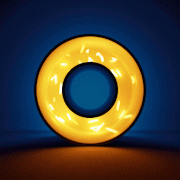
environmentdesign Floating Island - First Concept Art Version
Chrizzo posted a topic in Work in Progress
Hey Guys, this is the first visualisation of a project for school. It's a Floating Island which has 4 different areas. A grasland, a sand desert, a swamp area and on top of the mountain an ice land. The base geometry was made with WorldMachine 2 and also the base textures were made with this tool. After that, the base textures were edited in PS. All of this data was then imported in Houdini and things like clouds and plants were added. Also the shading, lighting and rendering was done in Houdini with Mantra. This is my first project in Houdini, Greetings Chrizzo Floating Island_Konzept_V1.0_Ani_01.mp4-
- 1
-

-
- floatingisland
- design
-
(and 14 more)
Tagged with:
-
Hello! i'm working on my personal project, i trying recreate "ice hummocks" which move through objects and collide. Based on this wiki page i recreate basic formula where p = 1000, g = 9.8, V (volume of the pieces) But problem is that i working with packed objects and don't know "area of the party of an object.". and pieces start spinning after a while. (i think it could be solved through dot product, but i stuck) scene file!! https://drive.google.com/open?id=0B6Rw9sQd7tjLTHNfYTNTRE1NMFE reference
- 2 replies
-
- 2
-

-
- archimedes principle
- ice
-
(and 6 more)
Tagged with:
-
Stew of cellphone footage with a speck of VFX spice. Enjoy! Role: Photography, Editing, Design, Post-Production and Direction. Audio: Kasabian - "Orange" Shot with an iphone 5. CGI done in Houdini. http://cargocollective.com/pedrokobuti
-
- photography
- ny
- (and 8 more)
-
Hi everyone, I'm trying to create a dynamic cracking ice wall. What that means is that I have a wall geo that needs to be cracked (multiple times possibly) based on an impact object (or anything really) but it cannot be pre-fractured due to the ice nature. I've been trying by haking the fracture parm (voronoi fracture config obj) node and tried with a SopSolver in DOP as well with no decent result. I was wondering if you had any ideas on how to approach this. Here's a photo of the ice crack shape I'm trying to go for: https://www.flickr.com/photos/dreamofdata/5434655197/in/photostream/ Thanks for any help. Diego
-
Hi, I hope this is the right place to post this. I'm working on an ice / snow shader for an iceberg cliff. I am a beginner, so the shader is still very simple, it's just a surface model and some displ noise. I've played with the SSS, refl and refract settings a bit, and tried my hands at some noise, but its still a looong way from looking realistic. I really hope you guys can help me with this! This is where I'm at right now (sorry for all the big pictures): wireframe (the model still needs some more work): network: And this is the look I'm actually going for (shader wise). The goal is hopefully to have a realistic looking iceberg shader. To help other beginners, it would be nice to have a hip file at the end, complete with notes and explainations, so everyone can learn from it. I'm including the scene file (without HDRI, it was too big), so definitely feel free to have a go at it! I hope you guys like the initiative and contribute some of your vast knowledge Iceshader_v001.zip Cheers!
-
To avoid reposting, here´s the link to SESI´s forum thread containing the link to the video as well as the scene files. Here´s hoping you find it useful. http://www.sidefx.com/index.php?option=com_forum&Itemid=172&page=viewtopic&t=31222

.png.6f2971207b0655775b87cfa97cc35944.png)
